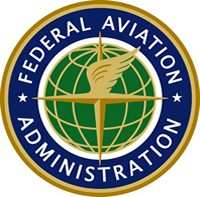Mon, Nov 03, 2014
The Term Ultralight In The U.S. Means Something Different From The Same Term Used In Some Other Countries
The term light sport aircraft (LSA) is reserved for U.S. certification, but the term ultralight is used for a similar airplane in many other countries. That’s why it’s not uncommon to see a foreign manufacturer’s website use the term ultralight when referring to an LSA being offered in the U.S.

Under U.S. rules, ultralights are defined in FAR 103, and they are referred to as vehicles, not aircraft. They also must be a single-place vehicle of very light weight. In many other countries, ultralight certification looks very much like an LSA, but their foreign ultralight certification is not interchangeable to the U.S. light sport certification.
To be certified as an LSA the aircraft must comply with the industry ASTM standards, not the ultralight standards for the foreign manufacturer’s location. A foreign manufacturer of an ultralight that also meets the LSA definition must go through a separate certification process to call that aircraft an LSA.
The definition of a light sport aircraft is found in the Federal Aviation Regulations Part 1. Here is an abridged version of that description.
- A maximum takeoff weight of not more than 1,320 pounds for aircraft not intended for operation on water, or 1,430 pounds for an aircraft intended for operation on water.
- A maximum airspeed in level flight with maximum continuous power of not more than 120 knots.
- A maximum stalling speed or minimum steady flight speed without the use of lift-enhancing devices of not more than 45 knots at the aircraft's maximum certificated takeoff weight.
- A maximum seating capacity of two persons, including the pilot.
- A single, reciprocating engine, if powered.
- A fixed-pitch propeller or ground-adjustable propeller.
- A fixed-pitch, semi-rigid, teetering, two-blade rotor system, if a gyroplane.
- A non-pressurized cabin, if equipped with a cabin.
- Fixed landing gear, except for an aircraft intended for operation on water or a glider.
Any aircraft the fits this description is okay for sport pilot operation regardless of the type of FAA certification it falls under. Despite the fact that a foreign-made aircraft certified as an ultralight meets all of the requirements listed above, it cannot be operated in the United States unless it also meets some sort of FAA certification.
More News
Terminal Radar Service Area Airspace surrounding designated airports wherein ATC provides radar vectoring, sequencing, and separation on a full-time basis for all IFR and participa>[...]
Very High Frequency (VHF) The frequency band between 30 and 300 MHz. Portions of this band, 108 to 118 MHz, are used for certain NAVAIDs; 118 to 136 MHz are used for civil air/grou>[...]
“From approximately November 2021 through January 2022, Britton-Harr, acting on behalf of AeroVanti, entered into lease-purchase agreements for five Piaggio-manufactured airc>[...]
Also: Virtual FLRAA Prototype, IFR-Capable Autonomous A/C, NS-32 Crew, Golden Dome Missile Defense Bombardier announced that the first production Global 8000 successfully completed>[...]
Aero Linx: The 1-26 Association (Schweizer) The Association’s goal is to foster the helpfulness, the camaraderie, and the opportunity for head-to-head competition that is fou>[...]
 ANN's Daily Aero-Term (05.29.25): Terminal Radar Service Area
ANN's Daily Aero-Term (05.29.25): Terminal Radar Service Area ANN's Daily Aero-Term (05.30.25): Very High Frequency (VHF)
ANN's Daily Aero-Term (05.30.25): Very High Frequency (VHF) Aero-News: Quote of the Day (05.30.25)
Aero-News: Quote of the Day (05.30.25) Airborne 05.23.25: Global 8000, Qatar B747 Accepted, Aviation Merit Badge
Airborne 05.23.25: Global 8000, Qatar B747 Accepted, Aviation Merit Badge ANN's Daily Aero-Linx (05.30.25)
ANN's Daily Aero-Linx (05.30.25)



